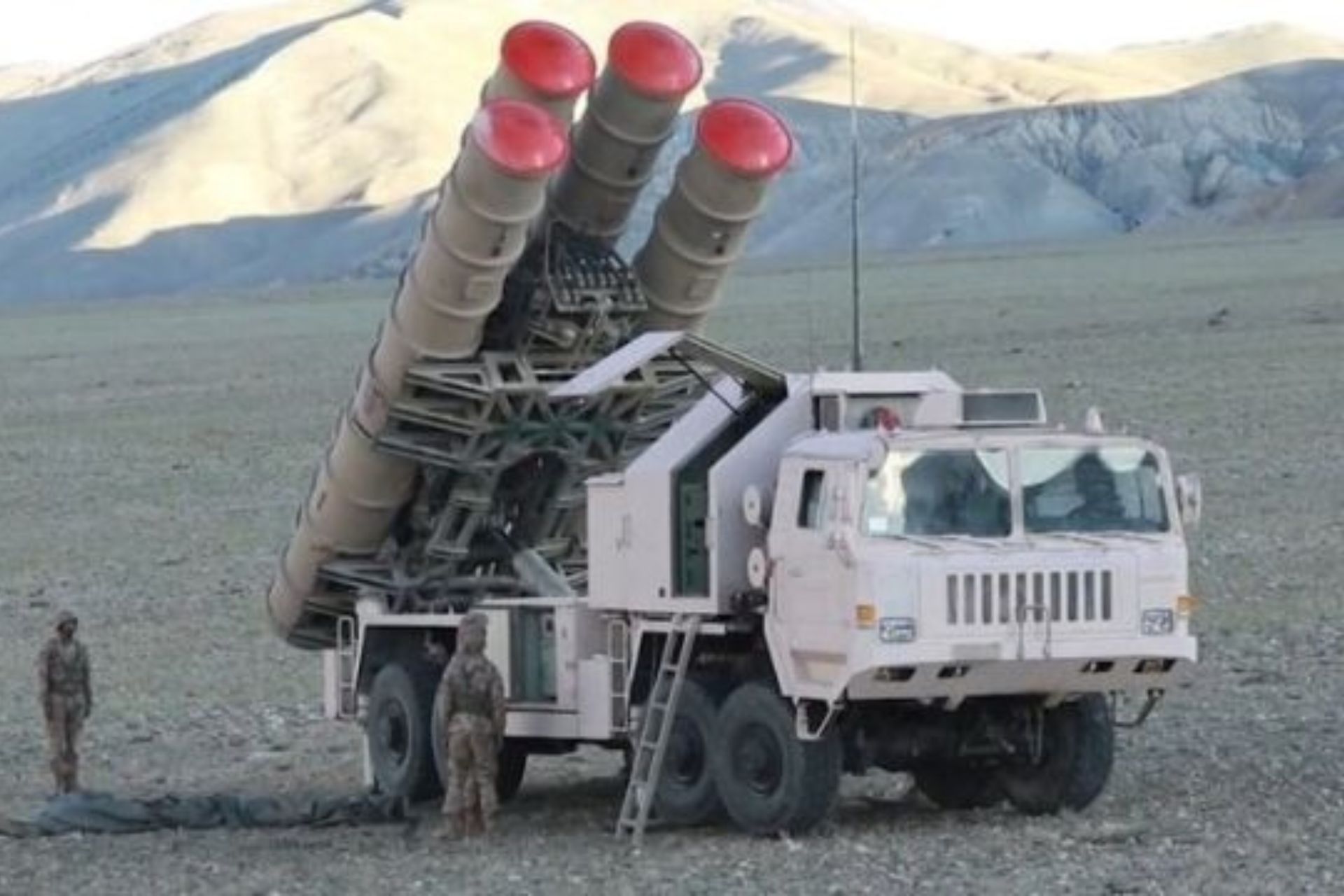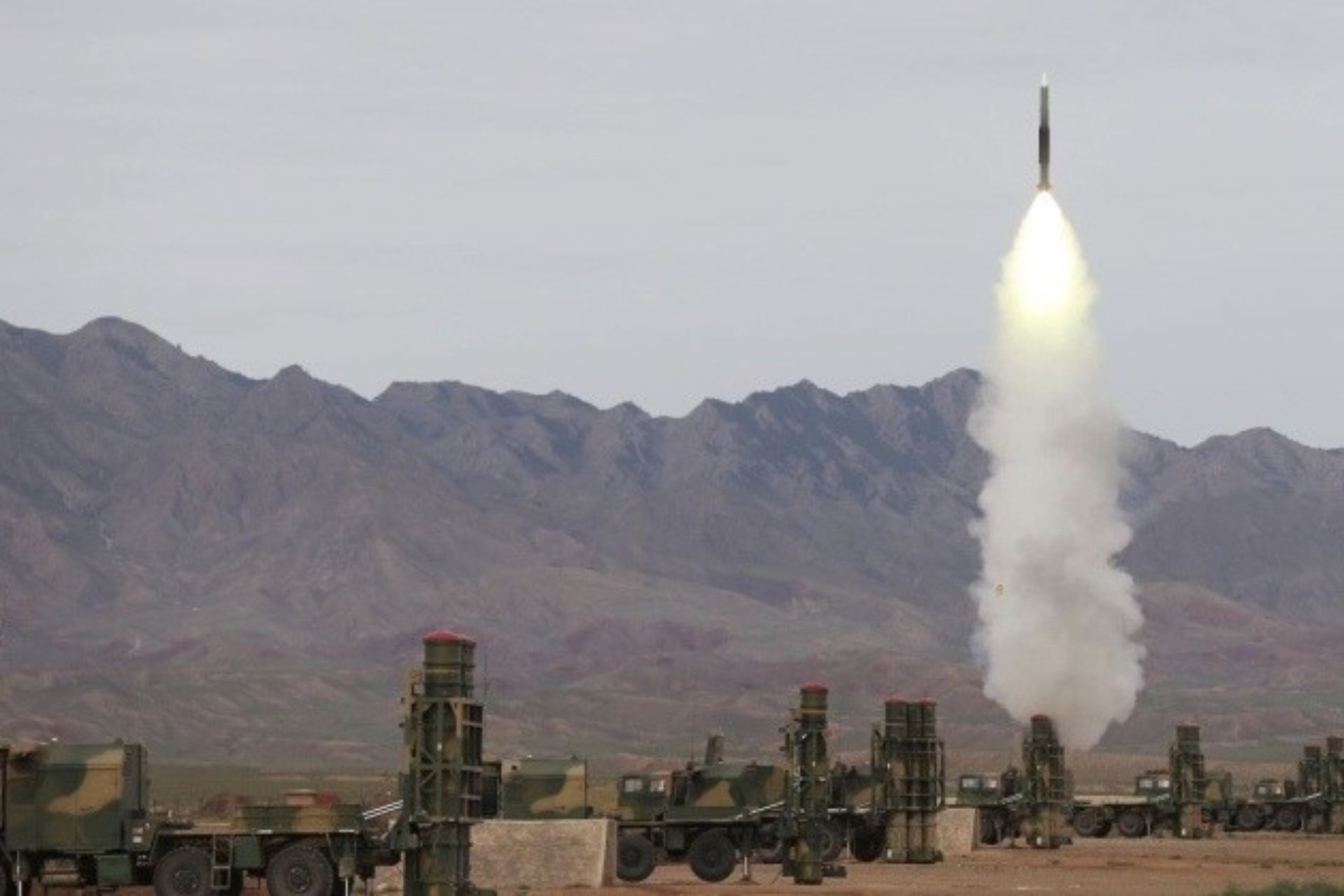Breaking News
China Unveils New Variant of HQ-9B Air Defense System with Enhanced Capabilities.
China’s People’s Liberation Army (PLA) has unveiled a new variant of its long-range HQ-9B air defense system, marking a significant advancement in the country’s defensive capabilities. This latest version of the HQ-9B, confirmed by recent images released by the Central Theater Command, introduces a new configuration that allows each launcher to carry up to eight smaller and lighter surface-to-air missiles, doubling the previous capacity of four larger missiles. This enhancement highlights the system’s ability to adapt to various threat scenarios, particularly by providing additional layers of defense against shorter-range targets.
Follow Army Recognition on Google News at this link

These smaller missiles are specifically designed to complement the longer-range missiles traditionally used by the HQ-9B, thereby increasing the system’s overall flexibility and effectiveness (Picture source: MWM)
According to reports from the Global Times, these smaller missiles are specifically designed to complement the longer-range missiles traditionally used by the HQ-9B, thereby increasing the system’s overall flexibility and effectiveness. The HQ-9B, widely regarded as one of the most advanced surface-to-air missile systems in the world, continues to evolve in response to emerging threats.
The original HQ-9 is a medium-to-long-range air defense missile system developed in China by the China Precision Machinery Import & Export Corporation (CPMIEC). Designed to intercept and destroy targets such as aircraft, cruise missiles, air-to-surface missiles, and tactical ballistic missiles, the HQ-9 initially drew inspiration from the U.S. Patriot system, incorporating a Track-Via-Missile (TVM) terminal guidance system. This two-stage missile system, mounted on an 8x8 Taian TAS-5380 truck chassis, features four missile containers per vehicle, with each missile equipped with a 180 kg warhead capable of reaching speeds up to Mach 4.2, a maximum range of 200 km, and an altitude of 30 km.
The HQ-9 is particularly effective due to its HT-233 3D phased-array radar, which can track up to 100 airborne targets and simultaneously engage more than 50. This air defense system has been adopted by several countries, including China, Algeria, Morocco, Turkmenistan, and Uzbekistan, and is capable of integrating various radar types, including anti-ballistic and anti-stealth radars. The HQ-9 is also deployed in batteries that include multiple command, control, radar, and launch vehicles, providing effective coverage against a wide range of aerial and ballistic threats.

The original HQ-9 is a medium-to-long-range air defense missile system developed in China by the China Precision Machinery Import & Export Corporation (CPMIEC). (Picture source: MWM)
The new HQ-9B variant is the result of rigorous testing conducted by the PLA Air Force (PLAAF). Notably, during a May 2021 exercise, an upgraded version of the HQ-9 was deployed by a missile brigade to a location 500 kilometers away in unfamiliar terrain. The exercise, carried out under challenging conditions including darkness, low temperatures, and sandstorms, demonstrated the system’s precision and reliability, successfully intercepting four unmanned aerial vehicles with four shots.
The HQ-9B stands out as the most widely produced long-range surface-to-air missile system outside of Russia, often compared to the Russian S-400 system. Like the S-400, the HQ-9B is designed for high mobility, with its missiles, radars, and command units mounted on mobile trucks to enhance survivability in combat scenarios. This feature, combined with its 250-kilometer range and ability to cover nearly 200,000 square kilometers with 360-degree radar, positions the HQ-9B as a formidable tool in China’s defensive arsenal.
The system’s cold-launch capability, allowing engagement in all directions, further enhances its operational flexibility. Improvements in sensors and data links also mark a significant upgrade from its predecessor, the HQ-9A, which entered service in the early 2000s.
Internationally, the HQ-9B has seen success, with exports to countries such as Turkmenistan, Uzbekistan, Pakistan, and reportedly Morocco. Despite pressure to align with NATO standards, Serbia opted for a lighter version of the system, the HQ-22, highlighting the global appeal of Chinese air defense technology.
The strategic deployment of the HQ-9B in sensitive areas such as the Fiery Cross, Subi, and Mischief Reefs in the disputed Spratly Islands of the South China Sea further underscores China’s commitment to defending its territorial claims. This deployment is a clear indication of China’s willingness to assert its military capabilities in a region marked by ongoing disputes and heightened tensions.


























